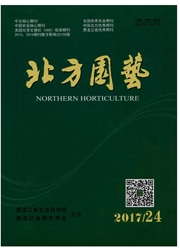

 中文摘要:
中文摘要:
通过溶液培养试验,研究了磷饥饿下番茄幼苗可溶性蛋白及根部液泡膜蛋白适应性的变化。结果表明:磷饥饿番茄幼苗根中可溶性蛋白质含量显著高于对照,而茎叶中可溶性蛋白质含量变化不显著;另外,茎叶中可溶性蛋白变化比根中迟;磷胁迫番茄幼苗根中的磷可能被转移到茎叶中重新利用。磷饥饿番茄幼苗根中液泡膜蛋白含量与各自的对照大体相当;通过SDS-PAGE检测到磷饥饿番茄液泡膜蛋白中新增49.9、52.6kD多肽谱带,由于磷饥饿处理时间相对较短,尚未对番茄幼苗的生长造成严重影响,所以,该多肽(49.9、52.6kD)可能是磷饥饿特异诱导多肽。
 英文摘要:
英文摘要:
The changes in tonoplast proteins and soluble proteins Under Phosphate (Pi) starvation were studied in tomato seedlings growing by solution culture method. The results indicated that with the extension of Pi starvation time, the soluble protein contents increased significantly in tomato roots, but the changes in shoots were not remarkably. In addition, it was also noted that the changes were later in shoots than in roots. It was reasonable to suppose that due to the remobilization of Pi from root to shoot during Pi stress,the shoot was later under Pi stress than the root in tomato,so the changes of proteins in response to Pi stress were later in shoots than in roots. The contents of tonoplast proteins from the roots of tomato under Pi starvation approximated to those of their unstressed controls respectively. However, the components of polypeptides under Pi starvation differ from those of the controls. These results indicated that Pi stress had no effect on the total amount of synthesis of proteins but has some effect on the differential expression of proteins during protein synthesis. SDS-PAGE showed that there were two novel polypeptides (49. 9,52. 6 kD) that appeared in tonoplast under Pi starvation for 5 day but not in control. Because Pi stress treatment duration in our study was relatively short which had no serious effect on the growth of the seedlings, the differential expression of polypeptides above-mentioned (49. 9,52. 6 kD) may be specific to Pi stress.
 同期刊论文项目
同期刊论文项目
 同项目期刊论文
同项目期刊论文
 期刊信息
期刊信息
